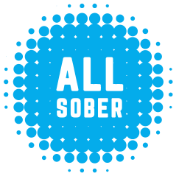Colleges Make Big Strides for Students in Recovery
Leading universities are now tailoring collegiate recovery programs to include newer models of treatment and broader experiences of recovery

There has never been a better time to be in recovery in college. The Association of Recovery in Higher Education now counts 144 American universities with dedicated collegiate recovery programs (CRPs) or communities (CRCs) as members, large and small, public and private, in every corner of the country.
The most comprehensive of these offer licensed addiction specialists and recovery counselors, mutual-aid support group meetings, active sober social scenes, recovery-oriented sober residences, dedicated sober lounge and dining spaces, scholarships for students in recovery, academic support, career counseling and even sober study abroad. (Read more about 10 top colleges welcoming students in recovery, and the evolution of CRPs.)
The Biden administration recently included a call for more CRPs as part of its response to the growing national drug crisis, and more students have more options than ever for starting or returning to school in recovery. But like many recovery programs, university ones are also thinking about how best to integrate newer tools and models of recovery, such as medication-assisted treatment (MAT), into their approaches. U.S. News & World Report surveys the scene:
“Historically, a lot of times, folks were told not to go back to school or that it would be a sobriety-hostile environment,” says Blake Schneider, director of the Center for Young Adult Addiction and Recovery at Kennesaw State University in Georgia. But “with the programs in place, a lot of times folks are told they can go back to school and they can succeed.”
More than 140 schools in the U.S. have “collegiate recovery programs” that provide support to help students maintain their sobriety while continuing their education, according to the Association of Recovery in Higher Education, the country’s leading organization representing these types of programs and communities.
Typically sanctioned by the school and requiring a separate application process to join, these programs received a boost of sorts in April when the Biden administration, grappling with a continually growing drug epidemic in the U.S., called for expanding such efforts by 25% by 2025 as part of its National Drug Control Strategy.
The shout-out comes as many experts in the field feel the time is right for collegiate recovery programs to expand their scope, both in number and approach.
“So much evolution [in collegiate recovery programs] has already happened in the last decade and it’s so exciting,” says Kristina Canfield, executive director and member and program manager for the ARHE. …
Research also points to encouraging results: An analysis of 2013 survey data from 29 collegiate recovery programs showed that only about 5% of participants had used alcohol or drugs in the past month, and that, on average, it had been more than 2.5 years since participants last drank alcohol and nearly three years since their last drug use.
An earlier paper reported that students affiliated with a recovery community at Texas Tech University posted an average grade-point average from 2002 to 2005 that was “consistently higher” than the overall student average at the school, though it noted that sustained periods of recovery prior to entering the program may have influenced both academic and sobriety success.
A Need for Greater Inclusion
Canfield grew familiar with collegiate recovery programs 12 years ago in 2010, when she started a program while attending graduate school at Ohio University. She’d experienced her own issue with a substance use disorder while earning her undergraduate degree, which forced her to take a year off from her studies and enter a detox facility twice.
“I think the greatest lie in American society is what we tell our youth about college,” Canfield says. “We say things like, ‘These are the greatest years of your life,’ or, ‘This is the time to experiment,’ and that somehow gets lumped in with using drugs and alcohol.”
Canfield returned to campus at age 21 for her junior year. But she remembers feeling isolated and having a hard time connecting with faculty and her peers, because it was hard for them to understand her experience.
“I very much felt like an alien — I just couldn’t conceive of there being anyone else in my community like me,” Canfield recalls. “It was really difficult to explain to my professors why I took a year off from school, or why I had failing grades on my transcripts.”
A key focus for many collegiate recovery programs over the past five years has been to create an optimal environment for students in recovery to reintegrate into campus life. That effort has included initiatives to provide ally training for non-recovery students and faculty, to help them become more cognizant of the issues students in addiction recovery face while on a college campus.
“Not only are we helping students who are seeking recovery, we are helping to create recovery-ready campuses or communities that are full of people who understand what it means to be a person in recovery,” Canfield says. …
Differences found among programs can involve the scope of their approach. Some schools, like Texas Tech, are centered around abstinence-based recovery methods like 12-step programs, and are less tailored toward students participating in alternative therapeutic strategies like medication-assisted treatment, or MAT, which typically involves a medication such as buprenorphine that can curb drug cravings or block a substance’s euphoric effects.
“If you’ve got people that are your traditional 12-steppers, and they’re sitting next to somebody who’s taking a pill to stay in a good place, that’s a real challenge,” says George Comiskey, associate director of external relations for the Center for Collegiate Recovery Communities at Texas Tech. “That challenges us as a community: How do we help everybody stay in a loving, supporting place with each other when how we identify our recovery looks different?”
Yet Comiskey acknowledges that with students using multiple substances or suffering from co-occurring disorders like mental illness, the program has strived to become more inclusive in recent years, and says it will continue to do so. Over the past year, he says, the Texas Tech program has supported a separate student group for those in mental health recovery and substance use disorder recovery that is not abstinence-based. The goal is to integrate that group into the school’s recovery support system.
As part of its program, Kennesaw State has an alcohol and drug educator who provides recovery-informed prevention counseling for students. The program also provides support for students in recovery from an array of addiction disorders — including those centered on gambling, eating or sex — and is among those that have made strides toward encompassing students participating in both 12-step–type and MAT therapies.
“There is no right or wrong way for a human being to recover — people need to do what’s best for them,” Canfield says. “Just seeing more of the inclusivity — that’s been the big evolution, and it’s been very exciting to see that growth.”
Read the full article from U.S. News & World Report, and keep up with the latest developments in sober-friendly schools from All Sober.
More Relaunch
Subs & Drugs & Rock & Roll, Part 3: 'I'm a Loser (And I'm Not What I Appear To Be)'
Don Fertman reaches bottom as the jelly donut hits the wall. The latest installment of the longtime Subway exec's memoir.
Subs & Drugs & Rock & Roll, Part 2: A Day in the Life
Don Fertman woke up one morning 40 years ago and poured himself a drink, as usual. But the future Subway exec didn't know this day would be far from ordinary.
Subs & Drugs & Rock & Roll, Part 1: With a Little Help From My Friends
Don Fertman, longtime Subway exec, writes about a pivotal moment in his 40 years of sobriety: what happened after he went public about his recovery on "Undercover Boss."
Here's How To Make the Office Holiday Party Recovery-Friendly
Four ways to make your holiday party more inviting to employees who are in recovery, according to the Society for Human Resource Management.
How Can I Be a Sober Ally in the Workplace?
You're not in addiction recovery, but you want to show up for people who are. Great! Here's what that looks like at the office.
Is Alcohol Big in Your Work Culture? Here's How To Sidestep — Or Talk About It
The "Mad Men" era may be over, but some workplaces can still be particularly challenging in recovery. Some pointers on putting your sobriety first.
Your Guide To Hanging Out and Making Friends in College — Sober
Doing college sans drugs and alcohol doesn't have to be a struggle. Some tips on making bonds that'll last and having a blast.
The Benefits of a Recovery-Friendly Workplace
Also called a "recovery-ready workplace," it's a winning proposition for high-quality employers and employees alike.











